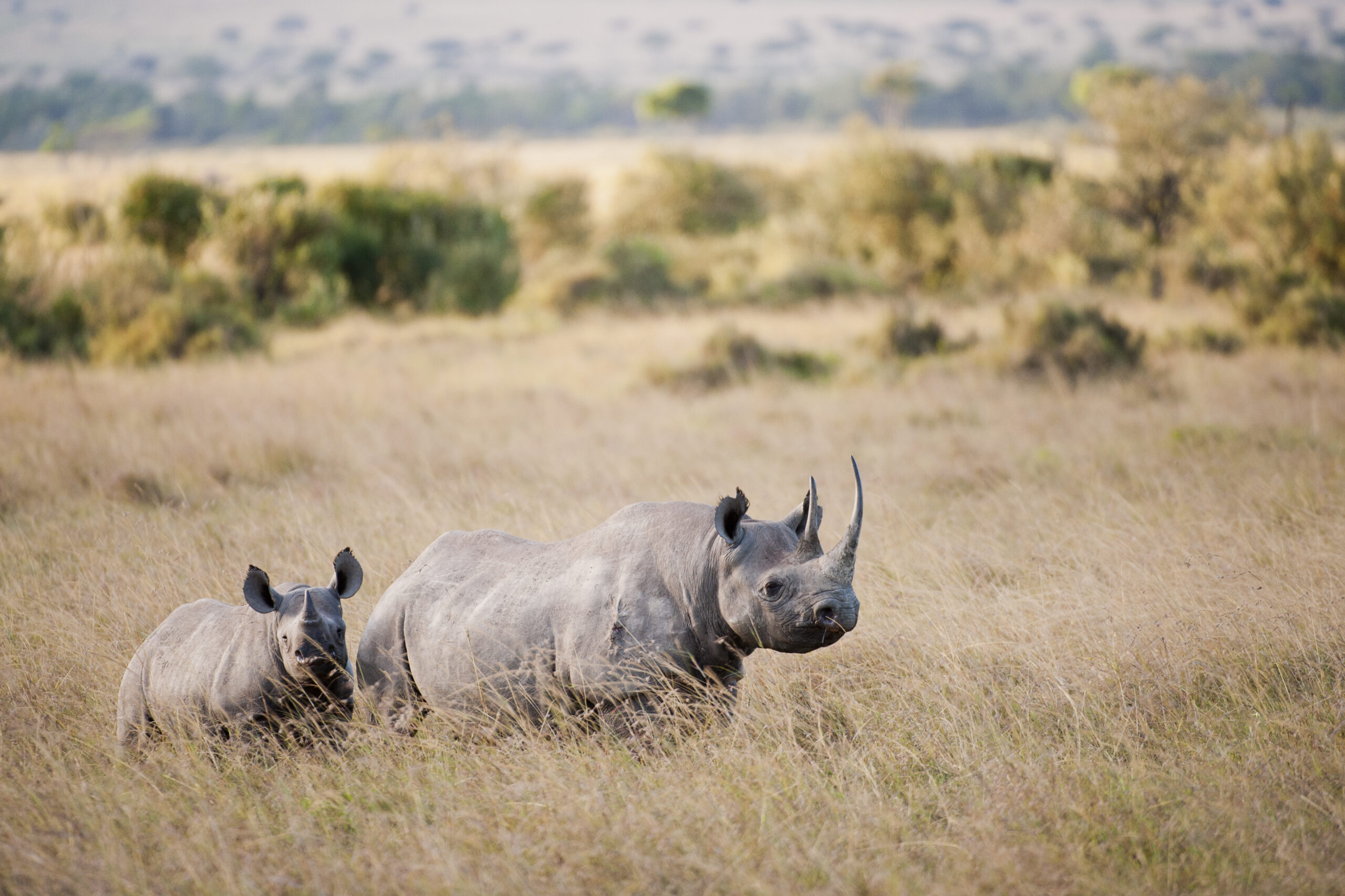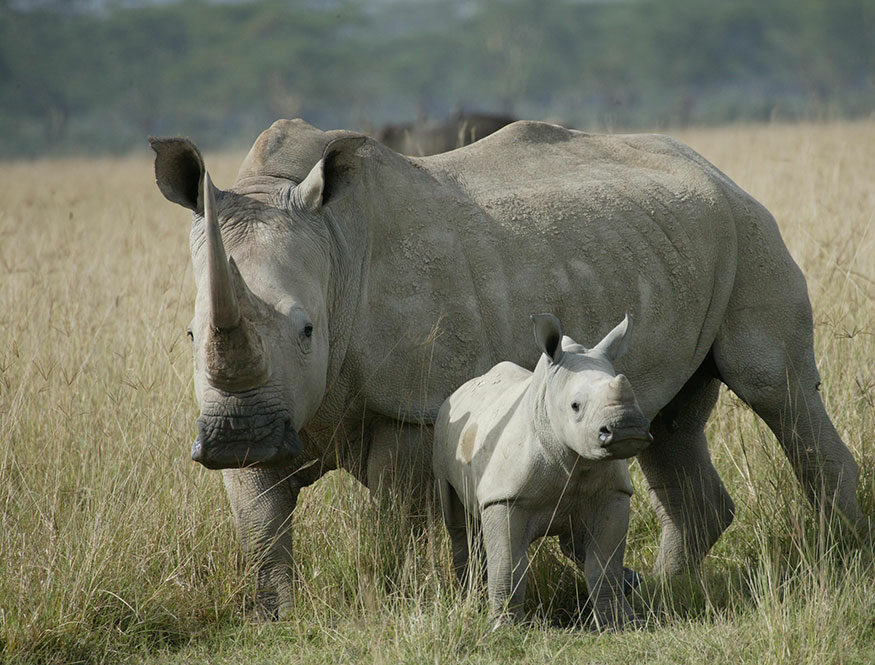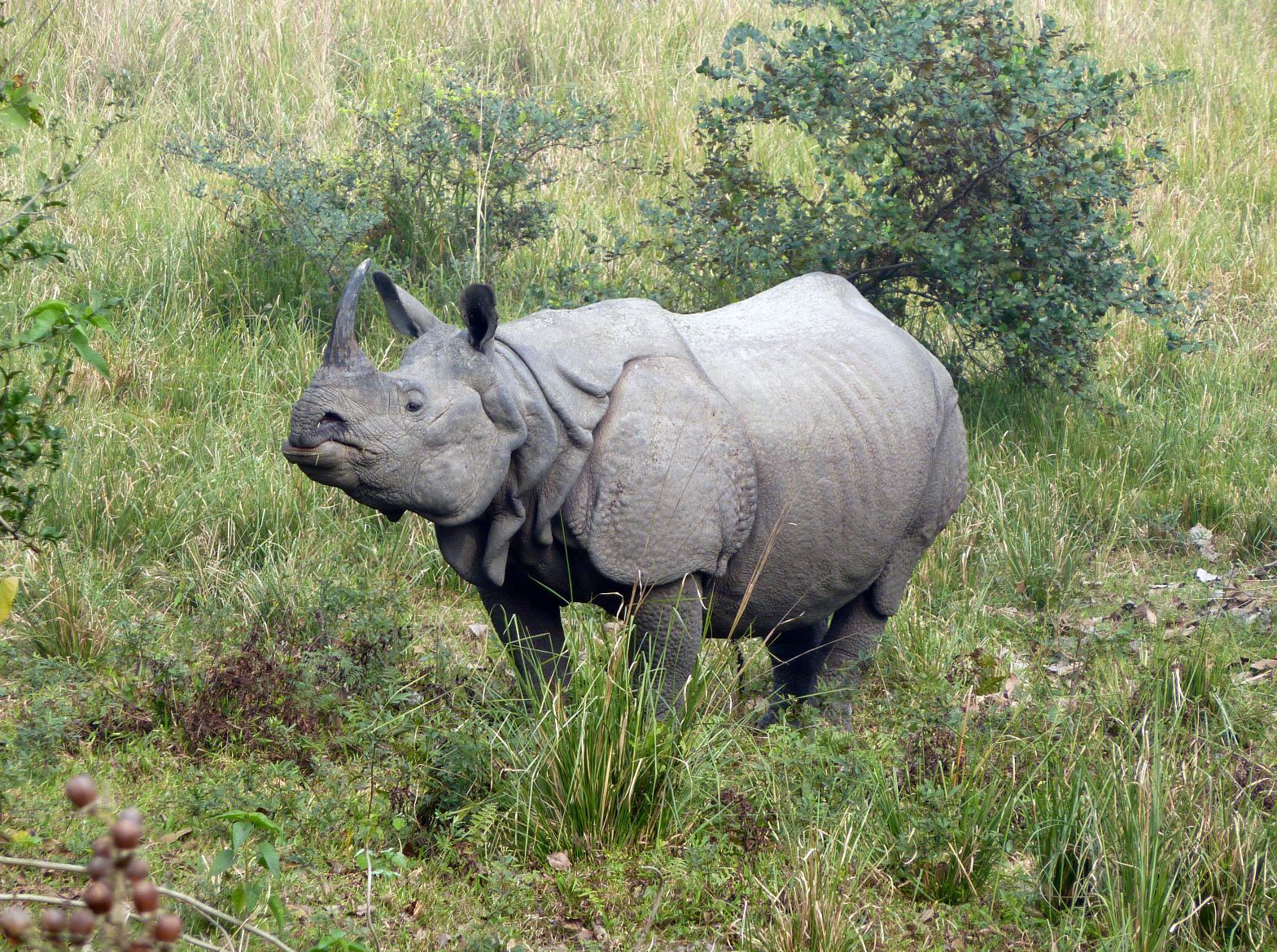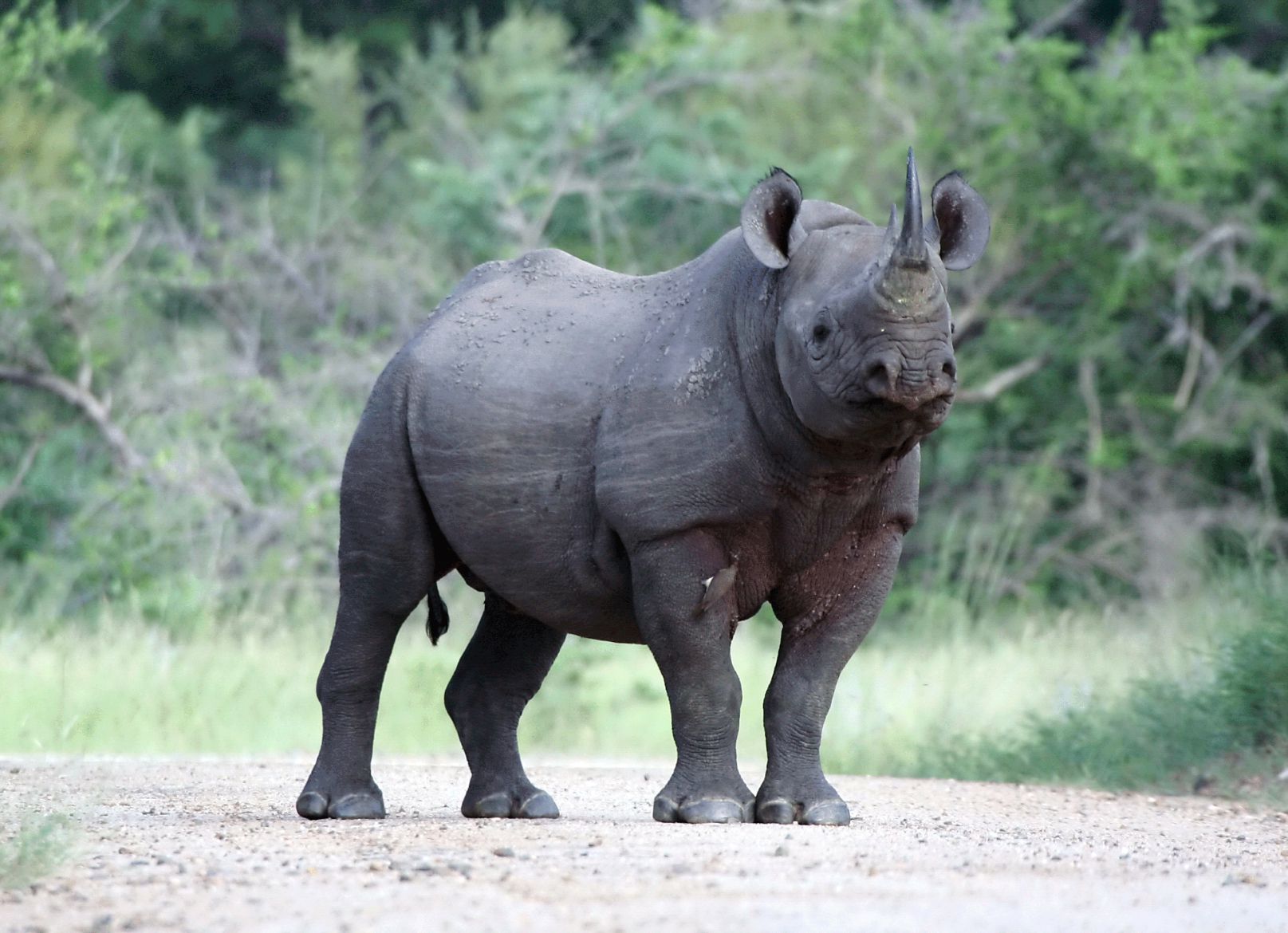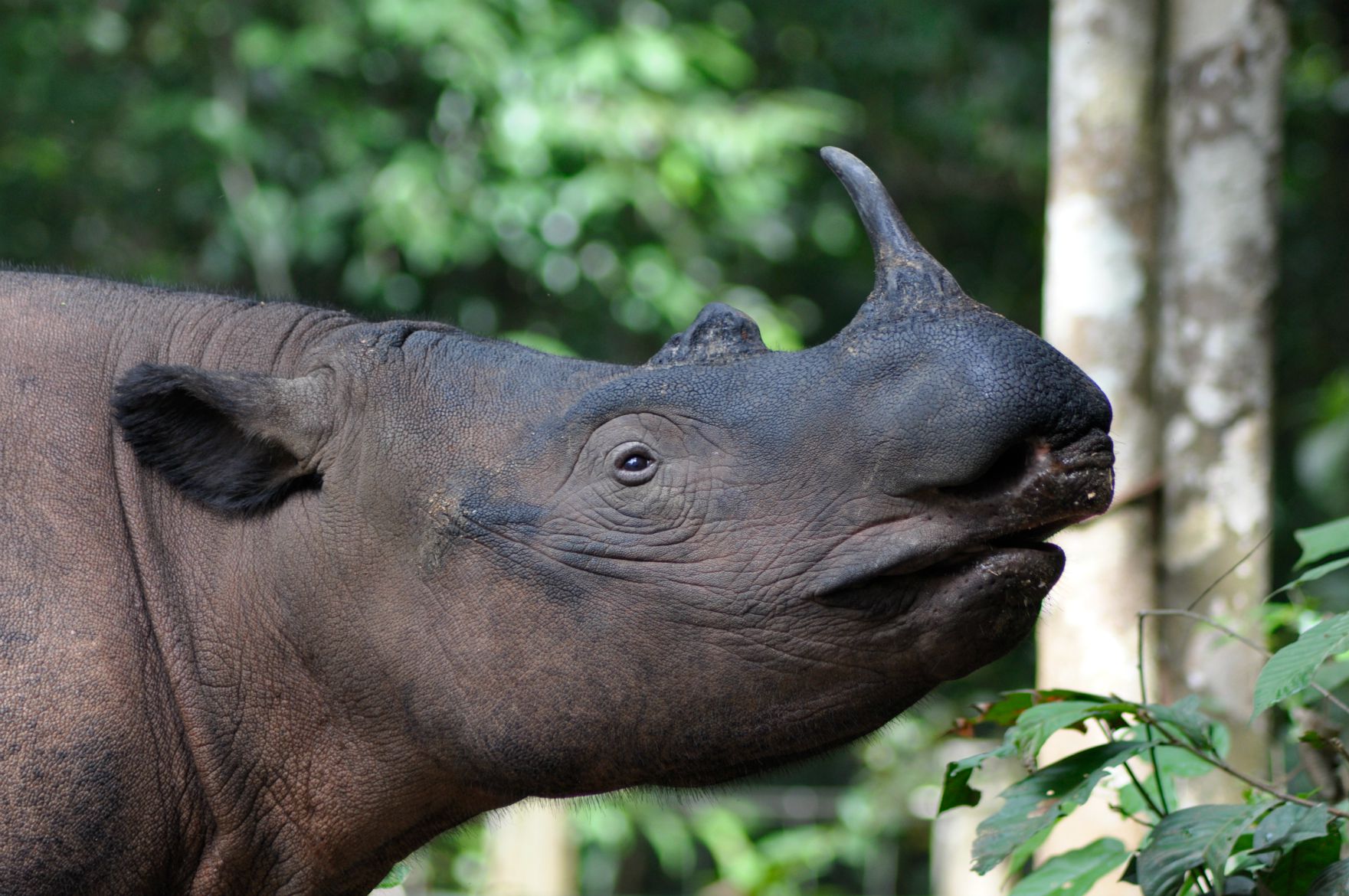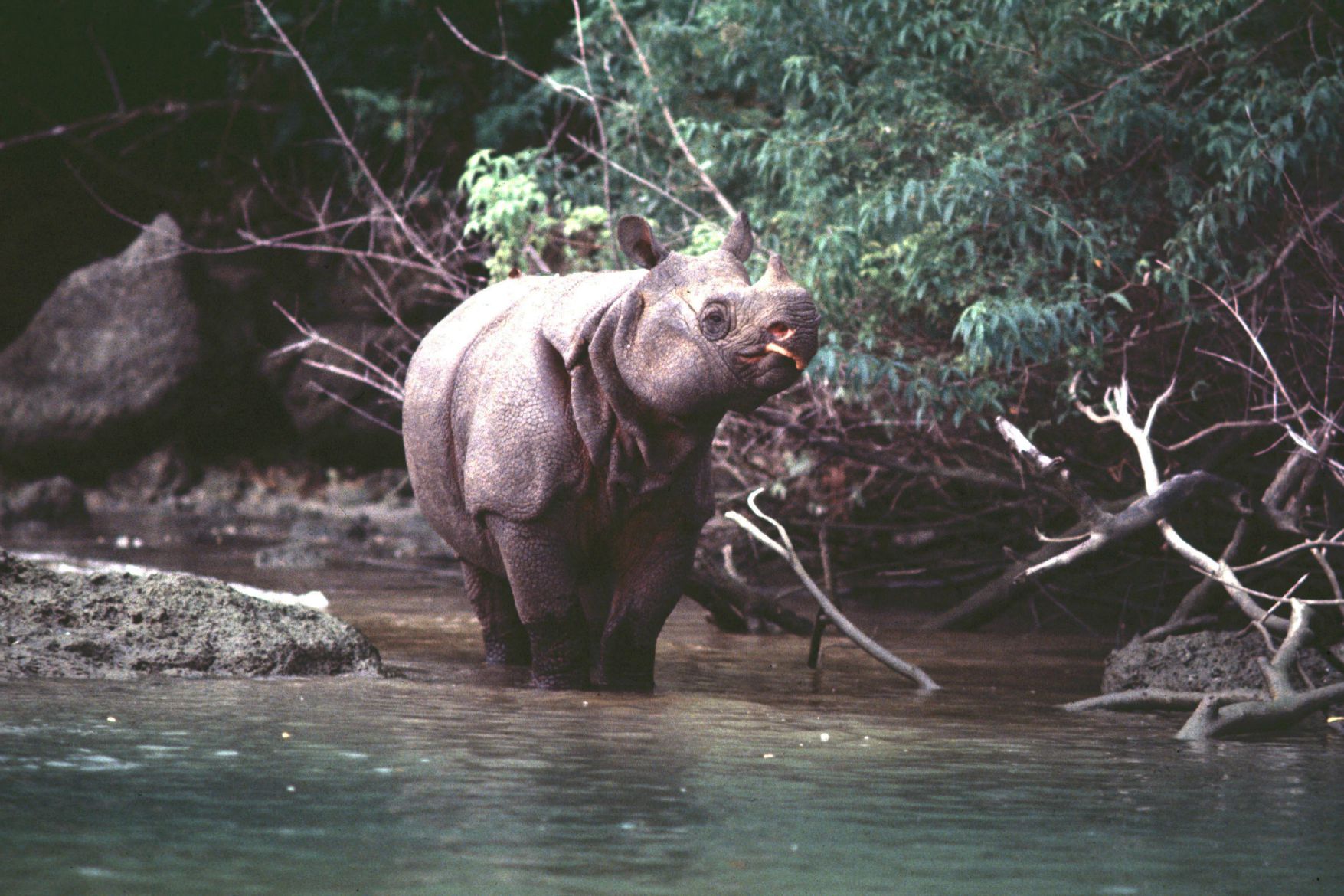The Rhino Family
Black rhino
(Diceros bicornis)
Black rhinos (Diceros bicornis) can currently be found in 12 countries in Africa, totalling an estimated 6,421 individuals. The black rhino population is made up of three subspecies, including approximately 2,583 south-western (D.b. bicornis); 2,450 southern (D.b. minor) and 1,388 eastern (D.b. michaeli). A fourth subspecies, the western black rhino (D.b. longipes), was declared extinct in 2011; its last evidence of existence was in Cameroon in 2006.
Black rhino populations suffered a drastic decline at the end of the 20th century. Between 1970 and 1993, the population of black rhinos decreased by 96% from approximately 65,000 to only 2,300 surviving in the wild. Since 1996, intense anti-poaching efforts and strategic translocations to safer areas have allowed the species to slowly recover. Poaching still looms as the greatest threat.
IUCN Red List Status: Critically Endangered
Facts
BIOLOGY
- The black rhino lives in Africa, primarily in grasslands, savannahs and tropical bush lands.
- There are three black rhino sub-species.
- Black rhinos are browsers. Their prehensile upper lip is adapted for grasping and holding leaves and branches of shrubs and trees.
- Black rhinos can live to be 35 – 40 years in the wild.
- Gestation lasts approximately 15 – 16 months, and mothers give birth to one calf every 2.5 – 3 years.
- Females and sub-adults generally are social, but bulls are typically solitary.
- Adult female black rhinos have overlapping ranges and are not really as solitary as often portrayed. Males are generally solitary and may be territorial.
COMMON NAMES
Black rhinos are not black. The species probably derives its name as a distinction from the white rhino and/or from the dark-colored local soil that covers its skin after wallowing in mud.
Prehensile or hook-lipped rhinoceros. The upper lip of the black rhino is adapted for feeding from trees and shrubs.
SCIENTIFIC NAME AND ORIGIN
Diceros bicornis Dicero from the Greek “di”, meaning “two” and “ceros”, meaning “horn” and “bicornis” from the Latin “bi”, meaning “two” and “cornis”, meaning “horn.”
CURRENT BLACK RHINO NUMBERS AND DISTRIBUTION
Today, the wild black rhino population is estimated at 6,421.
PHYSICAL CHARACTERISTICS
SIZE
Weight: 1,750 – 3,000 lbs (800 – 1,350 kg)
Height: 4.5 – 5.5 ft (1.4 – 1.7 m) tall at shoulder
Length: 10- 12.5 ft (3.0-3.8m) length of head and body
HORN
Black rhinos have two horns. The front horn is larger and measures 20 – 55 inches (0.5 – 1.3 m). The rear horn is smaller and measures up to 22 inches (55 cm) long.

